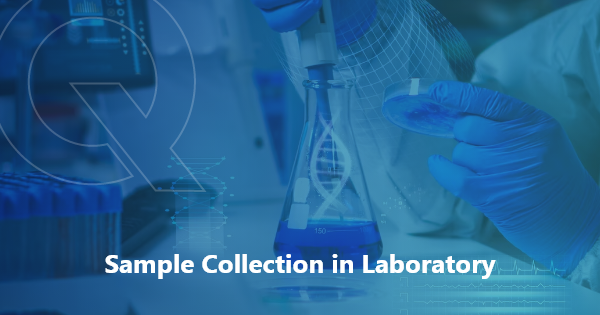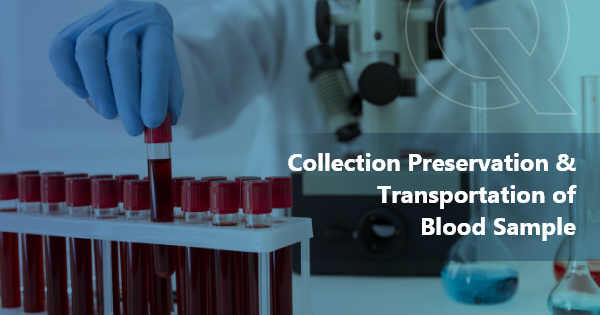Sample collection is a critical step in any laboratory procedure. It lays the foundation for accurate and reliable results in scientific experiments, research studies, and diagnostic tests. The success of subsequent analyses heavily depends on the quality and integrity of collected samples.
This article delves into the essential techniques and best practices for sample collection in a laboratory setting, highlighting the significance of meticulous attention to detail.
1. Preparation and Planning
Before embarking on sample collection, meticulous planning is essential. This involves understanding the purpose of the study, identifying the appropriate sample type, and determining the quantity required for the intended analyses. Researchers and technicians should also ensure they have the necessary equipment, containers, and reagents ready and properly labeled.
2. Proper Handling and Storage of Collection Equipment
The condition of collection equipment significantly impacts sample integrity. It is imperative that all equipment, such as pipettes, syringes, tubes, and swabs, are clean, sterilized, and free from any contaminants that could potentially compromise the results. Additionally, all materials should be properly labeled to prevent any confusion during sample processing.
3. Aseptic Techniques
Maintaining sterility during sample collection is crucial to prevent contamination. Aseptic techniques, which include wearing appropriate personal protective equipment (PPE) like gloves, lab coats, and face masks, must be followed rigorously. It is also recommended to work within a laminar flow hood or a biosafety cabinet when dealing with samples that may contain hazardous materials.
4. Selection of the Appropriate Sample Type
Selecting the right type of sample is paramount for the success of any laboratory analysis. Different tests and experiments require specific sample types, be it blood, urine, tissue, or environmental samples like soil or water. Researchers must be well-versed in the characteristics and requirements of each sample type to ensure accurate results.
5. Minimizing Sample Contamination
Contamination can occur at various stages of sample collection, from the collection site to the transportation and storage of samples. It is imperative to take precautionary measures to minimize the risk of contamination. For instance, when collecting blood samples, proper venipuncture techniques should be employed, and samples should be collected into sterile containers without touching the outer surface of the container.
6. Maintaining Chain of Custody
In many cases, maintaining a clear chain of custody is essential, especially in forensic or clinical settings. This involves documenting the handling, storage, and transfer of samples from the collection site to the laboratory. Proper documentation ensures that the integrity and authenticity of the samples are preserved throughout the entire process.
7. Temperature Control and Transportation
Certain samples, such as those for DNA analysis or enzyme assays, may be sensitive to temperature fluctuations. It is imperative to use appropriate containers and transportation methods to maintain the integrity of the samples. For instance, samples that require refrigeration should be transported in insulated containers with ice packs.
8. Timeliness of Sample Collection
Timeliness is another critical factor in sample collection. Some analyses require samples to be processed within a specific timeframe to yield accurate results. For example, microbiological samples may require immediate processing to prevent overgrowth of contaminants. Researchers should be aware of any time-sensitive requirements associated with their particular study.
9. Documentation and Record Keeping
Accurate and detailed record-keeping is essential for traceability and quality assurance. This includes documenting information such as sample source, collection date and time, any pre-processing steps, and storage conditions. These records serve as a reference point for future analyses and provide transparency in the research process.
10. Sample Preservation and Stabilization
Certain samples, especially those from remote or challenging environments, may require preservation to maintain their integrity until analysis. This may involve adding preservatives or stabilizing agents to prevent degradation or changes in composition. Understanding the specific requirements for sample preservation is crucial to ensure accurate results.
11. Ethical Considerations and Informed Consent
In research involving human or animal subjects, obtaining informed consent is paramount. Researchers must follow ethical guidelines and regulations to ensure that participants understand the purpose of the study, the nature of the samples being collected, and how their information will be used. Respecting ethical principles is not only a legal requirement but also fundamental for maintaining the integrity of the research.
12. Adaptation to Unique Sample Collection Challenges
Some research projects may present unique challenges in sample collection. This could include scenarios like collecting samples from extreme environments, handling delicate specimens, or dealing with limited quantities. In such cases, researchers must develop specialized techniques and protocols to address these challenges while maintaining sample integrity.
13. Training and Competency of Personnel
A well-trained and competent team is essential for successful sample collection. Personnel should be knowledgeable about the specific techniques and procedures relevant to their field of research. Continuous training and proficiency assessments help ensure that all team members are equipped with the necessary skills to carry out sample collection effectively.
14. Risk Assessment and Safety Measures
In laboratories dealing with hazardous materials or infectious agents, conducting thorough risk assessments is imperative. This involves identifying potential risks associated with the sample collection process and implementing appropriate safety measures to protect personnel, the environment, and the community at large. Safety protocols, emergency response plans, and proper disposal procedures should be well-defined and strictly followed.
15. Quality Control Checks
Implementing quality control checks at various stages of the sample collection process is essential to identify and rectify any potential issues. This may involve regular calibration of equipment, verification of sample labeling, and monitoring of environmental conditions. These checks ensure that the collected samples meet the required standards for accuracy and reliability.
16. Post-Collection Handling and Processing
Once samples arrive at the laboratory, they may undergo additional processing steps before analysis. This could involve centrifugation, filtration, or other preparatory techniques. It is crucial to follow standardized protocols for post-collection handling to maintain the integrity of the samples and ensure consistent results.
CONCLUSION:
Effective sample collection techniques are the cornerstone of reliable laboratory results. Researchers and technicians must adhere to rigorous protocols to ensure the integrity and quality of collected samples. By following best practices in preparation, handling, and documentation, laboratories can confidently generate accurate data, advancing scientific knowledge and contributing to the success of various research endeavors. Remember, meticulous attention to detail during sample collection ultimately lays the foundation for meaningful scientific discoveries.




![Blood Test for Hair Loss [Male/Female] Blood Test for Hair Loss](https://oncquest-blog.s3.ap-south-1.amazonaws.com/blog/wp-content/uploads/2023/12/12044200/Blood-Test-for-Hair-Loss.webp)
